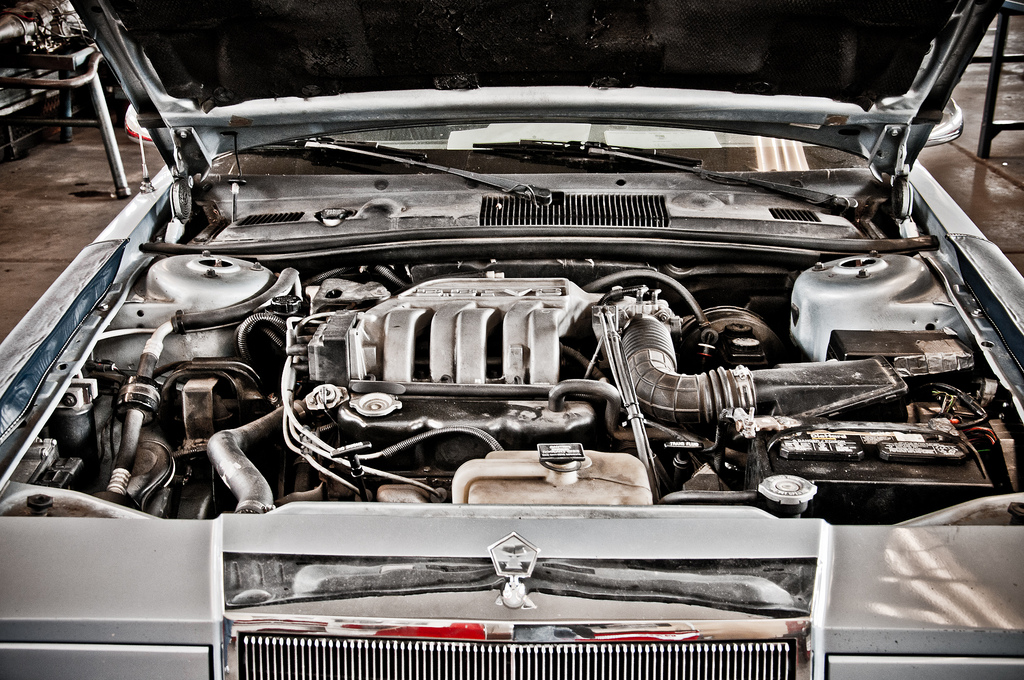A car engine features moving parts that create friction, resulting in heat. The radiator keeps the engine cool by pumping a combination of antifreeze and water through engine block chambers. This fluid absorbs excess heat, drawing it way from heat-prone areas. After flowing through the radiator chambers, the fluid is cool enough to travel back to the engine block. Maintaining antifreeze (coolant) level is important but so is knowing how to perform a radiator flush.
Solid deposits develop in the radiator over time and these can clog the engine cooling system. Maintaining this system is as easy as flushing the radiator seasonally, which involves changing the antifreeze. You will need some radiator flush solution, new antifreeze, a funnel, a wrench or Phillips head screwdriver (depending on the radiator drain), a receptacle for used antifreeze, and a rag.
Let the engine cool completely, locate the drain plug on the radiator, and place the antifreeze receptacle under the drain. Use the screwdriver or wrench to remove the plug and let the antifreeze empty into the receptacle. Replace the plug, go to the top of the radiator, and remove its cap. Add the radiator flush solution and fill the radiator the remainder of the way with water.
Replace the cap, start the engine, and allow it to reach the normal operating temperature. Turn the interior heat to its hottest setting and run the car for ten minutes with this heat on. Turn off the car and let the engine cool. Once the radiator and cap are no longer hot to the touch, proceed. Re-open the radiator drain and let the contents empty into the receptacle or a new container.
Replace the drain plug and go back to the top of the radiator. Open the radiator cap and insert the funnel into the opening. Fill the radiator with premixed antifreeze or a 50-50 mixture of water and antifreeze. If the car features a separate coolant reservoir, remove its cap and fill it with the premixed or 50-50 antifreeze-water mixture. Replace both caps, dispose of used antifreeze and flush properly, and wipe up spilled antifreeze.
Check the coolant level approximately one or two days after performing the radiator flush. If an air bubble has worked its way out, the level may have decreased, making it necessary to add more antifreeze. Regular coolant level checks identify a leak before it becomes a major problem. This is just one aspect of responsible vehicle ownership.

